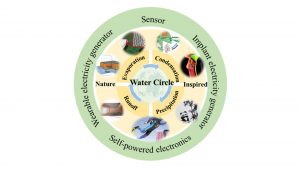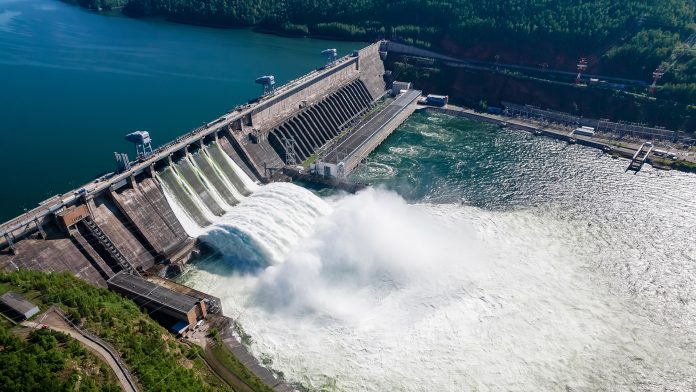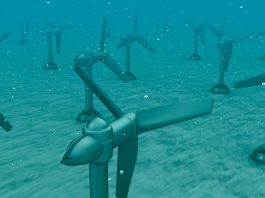A group of researchers has put together a review paper that explores the opportunities and challenges of water-driven electricity generation.
Raindrops, evaporating water, and even moisture in the air are considered to be potential sources of sustainable electricity generation. However, many of the technologies that take advantage of this source of energy remain at the lab-bench stage. Now, a group of researchers has analysed the opportunities and challenges surrounding this field.
The review paper, ‘Bio-inspired water-driven electricity generators: From fundamental mechanisms to practical applications,’ is published in the journal Nano Research Energy.
Utilising water for electricity generation
When considering sustainable electricity generation, hydroelectric dams or large tidal barrages are generally what first come to mind. These options, however, depend on heavy, bulky, and above all, centralised forms of harvesting the energy contained in water.
Many other options can generate electricity from water in a more decentralised way, which takes advantage of its ubiquitous presence on Earth. These technologies would produce usable electricity from processes of evaporation, condensation, rainfall, moisture, and even minute flows of water at the scale of a droplet falling off a leaf, and the very tiniest of waves. The proposed technologies also take advantage of many physical phenomena, including the piezoelectric effect, triboelectricity, thermoelectricity, and the hydrovoltaic effect.
“Water is everywhere. It is ambiently available like no other entity. So all this clean energy is just sitting there, unused and waiting for us to take advantage of it,” said Zuankai Wang, paper author of the review and researcher with the Department of Mechanical Engineering at the City University of Hong Kong.
“It makes sense for us to tap into this vast reservoir of energy not just for bulk electricity production, but for a range of applications such as sensors and wearable devices where a micro-scale of energy harvesting is much more appropriate to the use it is being put to.”
Problems with water-energy harvesting techniques
However, much of the work in the development of distributed water-energy technologies remains very much in its infancy. These lab-bench concepts for electricity generation from water suffer from poor durability, poor scalability, and low energy conversion. Having low energy conversion means that for the effort to generate electricity, not much is actually produced.

For example, the development of generators that are driven by water vapour in the air uses materials that exhibit a poor capacity for water adsorption, resulting in incomplete interaction between the water and the material. This produces a low electrical output, which declines even more in harsh environments.
“And yet the rest of nature has figured out thousands of different ways to do exactly this,” added Wang. “Evolution has basically perfected the process of extracting energy from ambient hydrologic processes in ways that are extremely efficient.”
Water-energy harvesting in nature
There are many examples of where electricity generation from water is possible in nature. The lotus leaf, for example, on a micro- and nanoscale, enjoys an extremely hydrophobic structure that allows droplets of water to roll across its surface with extremely low resistance – essentially on a cushion of air. This phenomenon has inspired engineers to study textured superhydrophobic surfaces.
Another group of researchers, inspired by electric eel membranes, have developed artificial electric organs making use of hydrogel arrays that work as analogues of the eel membrane components.
More work needs to be done to develop the required technology
Although there has been an explosion of bio-inspired engineering for water-energy generation, the current generation of water-driven electricity generators remains largely ad hoc. In their work, the researchers found that the field required a comprehensive review to place it on a firmer theoretical foundation and identify research gaps in order to better guide the design of systems and the development of novel materials.
The review covers the main mechanisms of electricity generation for bio-inspired water-driven generators. It also explores the various bio-inspired devices that have been developed, specifically evaporation, moisture, rainwater, and wave and flow-driven generators, covering three use cases: sensors, wearable electricity generators, and self-powered electronics.
It was concluded that the underlying structures of water-driven electricity generation remain under-theorised, in particular, that of charge transport and transfer, as well as of energy conversion. There is no general theory of charge transfer at the interface of solid materials and water, and proposed mechanisms for this remain hotly debated.
In other areas, to improve electricity generation, the ability to absorb water from the environment must also be improved. It was recommended that a greater focus should be applied to the study of organisms that have evolved over a long period of time in extremely arid areas, such as deserts.
Finally, the researchers also noted that much of the design of bio-inspired water-driven electricity generators remains at the lab-bench stage, with these devices confronting only a fairly mild experimental setting rather than real-world conditions. Even in the laboratory, these technologies only survive a few days, or at most, a few months. This compares poorly to the 25-year lifespan of current sustainable electricity generation technologies such as solar panels.
There may be uses for these technologies in a few cases, perhaps in medical applications, where a short lifespan may be considered desirable, however, for wider adoption of the technology, unsatisfactory lifespans will need to be overcome.









